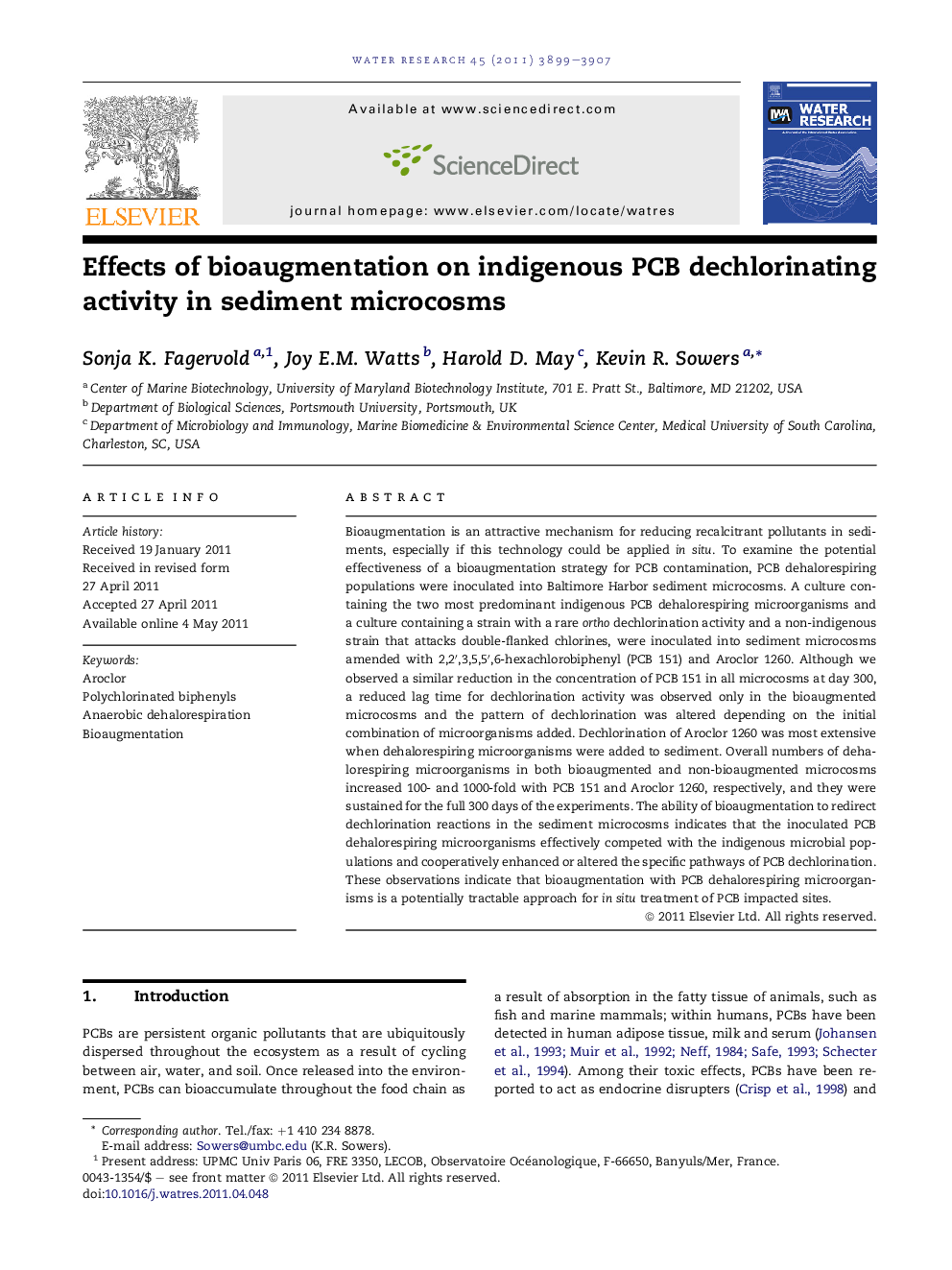| کد مقاله | کد نشریه | سال انتشار | مقاله انگلیسی | نسخه تمام متن |
|---|---|---|---|---|
| 4484089 | 1316909 | 2011 | 9 صفحه PDF | دانلود رایگان |

Bioaugmentation is an attractive mechanism for reducing recalcitrant pollutants in sediments, especially if this technology could be applied in situ. To examine the potential effectiveness of a bioaugmentation strategy for PCB contamination, PCB dehalorespiring populations were inoculated into Baltimore Harbor sediment microcosms. A culture containing the two most predominant indigenous PCB dehalorespiring microorganisms and a culture containing a strain with a rare ortho dechlorination activity and a non-indigenous strain that attacks double-flanked chlorines, were inoculated into sediment microcosms amended with 2,2′,3,5,5′,6-hexachlorobiphenyl (PCB 151) and Aroclor 1260. Although we observed a similar reduction in the concentration of PCB 151 in all microcosms at day 300, a reduced lag time for dechlorination activity was observed only in the bioaugmented microcosms and the pattern of dechlorination was altered depending on the initial combination of microorganisms added. Dechlorination of Aroclor 1260 was most extensive when dehalorespiring microorganisms were added to sediment. Overall numbers of dehalorespiring microorganisms in both bioaugmented and non-bioaugmented microcosms increased 100- and 1000-fold with PCB 151 and Aroclor 1260, respectively, and they were sustained for the full 300 days of the experiments. The ability of bioaugmentation to redirect dechlorination reactions in the sediment microcosms indicates that the inoculated PCB dehalorespiring microorganisms effectively competed with the indigenous microbial populations and cooperatively enhanced or altered the specific pathways of PCB dechlorination. These observations indicate that bioaugmentation with PCB dehalorespiring microorganisms is a potentially tractable approach for in situ treatment of PCB impacted sites.
► Sediment microcosms were bioaugmented with indigenous and non-indigenous dechlorinators.
► Bioaugmentation reduced lag time and altered the dechlorination pathways.
► Bioaugmented microorganisms were sustainable as long as activity continued.
► Inoculated PCB dechlorinators effectively compete with indigenous microbial populations.
Journal: Water Research - Volume 45, Issue 13, July 2011, Pages 3899–3907